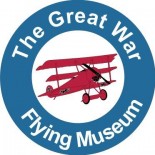The Great War Flying Museum
To honour the pilots who served with gallantry and distinction during the Great War of 1914 – 1918.
D.VII Description and Specifications
|
||
|
|
||
|
||
|
|
||
|
||
|
|
| SPECIFICATIONS | |
| Country: | Germany |
| Manufacturer: | Fokker Flugzeug-Werke GmbH Albatros-Werke Johannisthal Ostdeutsche Albatros-Werke Schneidemuhl (OAW) |
| Type: | Fighter |
| First Service: | Late March or early April 1918 |
| Number Built: | About 2,694 |
| Engine(s): | Mercedes D-III 6 cylinder liquid cooled inline, 160 hp BMW IIIa inline, 185 hp |
| Wing Span: | 29 ft 3.5 in |
| Length: | 22 ft 11.5 in |
| Height: | 9 ft 2.5 in |
| Empty Weight: | 1,540 lb |
| Gross Weight: | 1,939 lb |
| Max Speed: | 118 mph (Mercedes) 124 mph (BMW) |
| Ceiling: | 18,000 ft (Mercedes) 21,000 ft (BMW) |
| Endurance: | 1.5 hours |
| Crew: | 1 |
| Armament: | 2 Spandau 7.92 mm machine guns |


